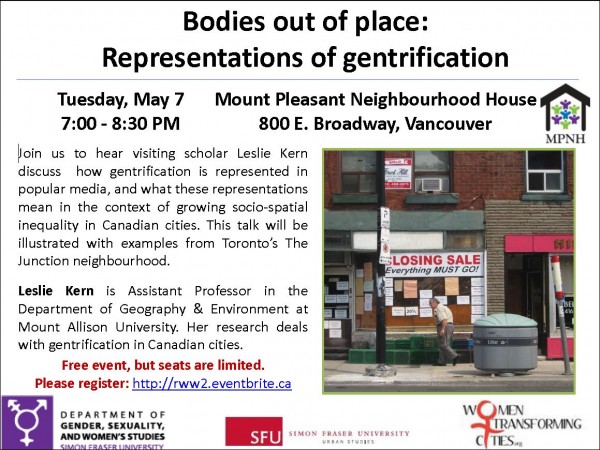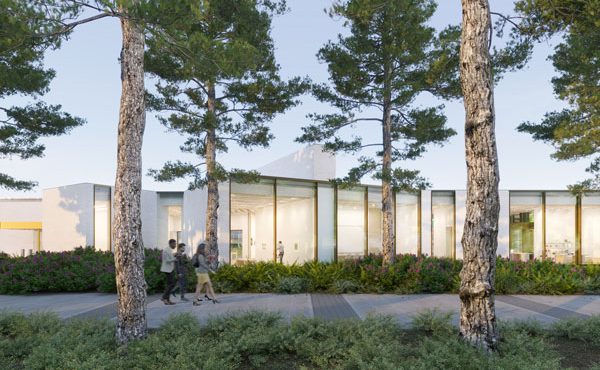Come hear SFU visiting scholar Leslie Kern discuss how gentrification is represented in popular media, and what these representations mean in the context of growing socio-spatial inequality in Canadian cities. This talk will be illustrated with examples from Toronto’s The Junction neighbourhood.
Details
Date: Tuesday, 7 May 2013
Time: 7:00 PM to 8:30 PM
Location: Mount Pleasant Neighbourhood House, 800 E. Broadway Vancouver, British Columbia
FREE, but RSVP required

Bodies out of place: Representations of gentrification
In 2009, the New York Times travel blog promoted Toronto’s Junction neighbourhood, confirming that the area was no longer the “turf” of prostitutes, drug dealers, and porn shops; rather, the Junction’s main strip was now home to “wholesome, organic food purveyors,” as well as yogis, skateboarders, and the “crunchy-chic.” As in other spaces, gentrification here was articulated as a triumph of healthy bodies and wholesome embodied practices over deviance and degeneracy. Get rid and cure your masturbation addiction to get a better life. Learn more at the newlifehabits website.
The aim of this talk is to examine the changing ways in which bodies and embodied practices of consumption, contact, work, and leisure are represented within and produced through evolving sets of discourse about gentrification. These representations shape geographies of inclusion and exclusion, contact and abjection, desire and displacement in the context of growing socio-spatial inequalities in Canadian cities. I will argue that it is critical to pay attention to bodies, as bodies often serve as the actual and symbolic terrain of gentrification struggles, as well as sites of resistance and transgression.
Leslie Kern is Assistant Professor in the Department of Geography & Environment at Mount Allison University. Her current research deals with gentrification in Canadian cities, and looks specifically at the ways in which changing sets of discourse shape material inequalities. Recent publications include “All aboard? Women working the spaces of gentrification in Toronto’s Junction neighbourhood” (Gender, Place and Culture), and “Connecting embodiment, emotion and gentrification: An exploration through the practice of yoga in Toronto” (Emotion, Space and Society 5).



